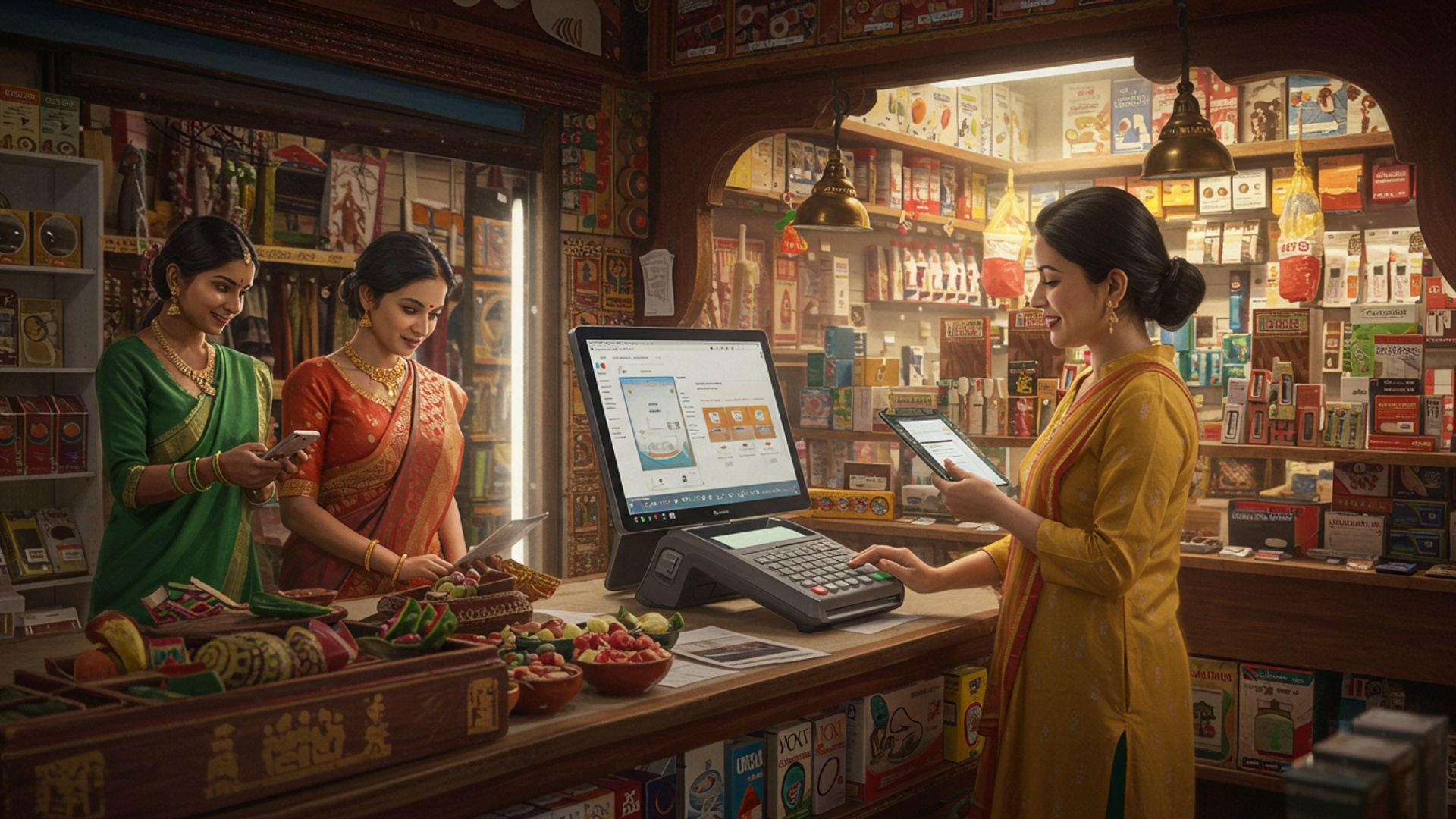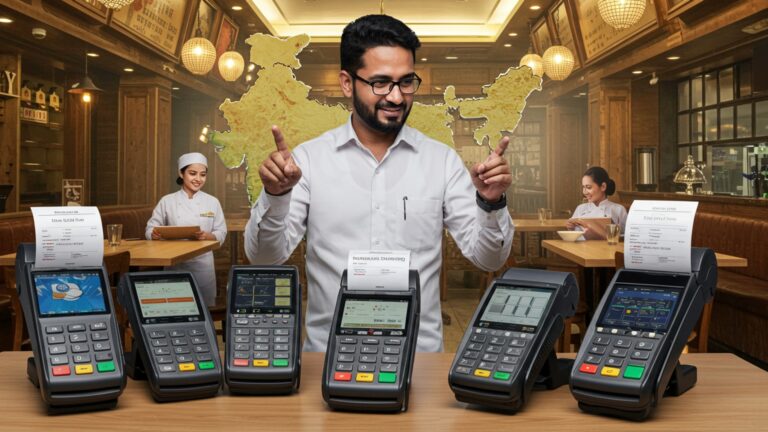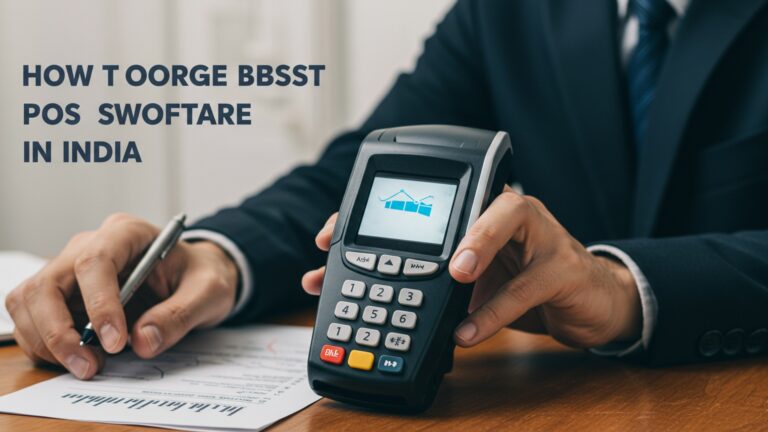Discover How to Find the Best POS Software in India for Your Retail Store
Navigating India’s dynamic retail landscape demands more than just a cash register; it requires a robust technological backbone. With the rapid adoption of UPI payments and the complexities of GST compliance, retailers face immense pressure to streamline operations, manage inventory accurately. enhance customer experiences across diverse channels. Finding the best POS software in India is no longer a luxury but a strategic imperative for sustained growth. Modern cloud-based solutions offer real-time data insights, seamless omnichannel integration. scalable architecture, directly addressing the unique demands of both burgeoning startups and established enterprises. Leveraging these advanced systems transforms transactional data into actionable intelligence, driving efficiency and profitability.

Understanding POS Software: The Backbone of Modern Retail
In the rapidly evolving landscape of Indian retail, a Point of Sale (POS) system is no longer just a cash register; it’s a comprehensive business management tool. At its core, POS software is the system that allows your retail business to complete sales transactions. But, its capabilities extend far beyond simply ringing up purchases. It integrates various crucial aspects of your operations, from managing inventory to tracking customer data, providing a holistic view of your business performance.
For any retail store in India, a robust POS system is fundamental for efficiency, accuracy. growth. It streamlines operations, reduces human error. provides invaluable insights that can drive strategic decisions. Investing in the best POS software in India can be a game-changer, transforming manual, time-consuming tasks into automated, efficient processes.
Key components of a typical POS system include:
- POS Software: The brain of the system, running on a computer, tablet, or smartphone.
- Hardware: This can include a barcode scanner, receipt printer, cash drawer. credit card reader.
- Payment Processing: Integration with various payment gateways to accept debit/credit cards, UPI. other digital payment methods prevalent in India.
Key Features to Look for in the Best POS Software in India
When searching for the best POS software in India, it’s crucial to evaluate a vendor’s offering against a comprehensive list of features. These features dictate the software’s ability to meet your specific operational needs and contribute to your business’s overall success.
- Sales & Transaction Management:
- Quick and accurate sales processing.
- Ability to handle returns, exchanges. voids.
- Support for discounts, promotions. loyalty programs.
- Multiple payment options (cash, card, UPI, digital wallets).
- Split tenders and layaway options.
- Inventory Management:
- Real-time tracking of stock levels across multiple locations.
- Automated reorder points and purchase order generation.
- Barcode generation and scanning capabilities.
- Variant management (size, color, style).
- Stock transfers between stores.
- Customer Relationship Management (CRM):
- Customer database for tracking purchase history.
- Loyalty program integration (points, discounts).
- Ability to capture customer contact details for marketing.
- Personalized offers based on past purchases.
- Employee Management:
- Track employee sales performance.
- Manage shifts and time clock functionality.
- Assign user roles and permissions.
- Commission tracking.
- Reporting & Analytics:
- Comprehensive sales reports (daily, weekly, monthly, by product, by employee).
- Inventory reports (stock levels, slow-moving items).
- Customer reports (top spenders, purchase frequency).
- Financial summaries and profit margin analysis.
- Customizable dashboard for key metrics.
- Integrations:
- Seamless integration with popular accounting software (e. g. , Tally, QuickBooks).
- Compatibility with e-commerce platforms (e. g. , Shopify, WooCommerce) for omnichannel retail.
- Integration with various payment gateways specific to the Indian market.
- API availability for custom integrations.
- Hardware Compatibility:
- Ensuring the software works with your existing or preferred POS hardware (scanners, printers, tablets).
- Scalability:
- The ability of the software to grow with your business, supporting additional stores, employees. product lines without performance degradation.
- Security:
- Data encryption, user access controls. compliance with data protection regulations to safeguard sensitive customer and business insights.
Cloud-Based vs. On-Premise POS: Which is Right for You?
The choice between cloud-based and on-premise POS systems is a critical decision that impacts cost, accessibility. maintenance. Both have distinct advantages and disadvantages. the “best” option depends entirely on your specific business requirements, budget. technical infrastructure.
Cloud-Based POS (SaaS – Software as a Service)
Cloud-based POS systems operate over the internet, with data stored on remote servers managed by the vendor. You typically pay a monthly or annual subscription fee.
- Pros:
- Lower upfront costs (no large hardware or server investments).
- Accessible from anywhere with an internet connection (via browser or app).
- Automatic updates and maintenance handled by the vendor.
- Enhanced data security (vendor is responsible for backups and disaster recovery).
- Easy scalability for multiple locations.
- Cons:
- Reliance on internet connectivity (though many offer offline mode with data sync).
- Ongoing subscription fees can add up over time.
- Less control over data storage and server infrastructure.
- Potential for vendor lock-in.
On-Premise POS (Local Server)
On-premise POS systems are installed directly on your business’s computers and servers. You own the software license and are responsible for its maintenance, updates. data storage.
- Pros:
- Full control over your data and system.
- No internet dependency for core operations.
- One-time purchase cost (though maintenance agreements are common).
- Higher customization potential.
- Cons:
- Higher upfront investment for software licenses and hardware.
- You are responsible for IT maintenance, backups. security.
- Limited accessibility (typically only within the store network).
- Updates can be manual and costly.
- Scalability can be more complex and expensive.
Here’s a comparison to help visualize the differences:
| Feature | Cloud-Based POS | On-Premise POS |
|---|---|---|
| Cost Model | Subscription (monthly/annually) | One-time license purchase + maintenance |
| Data Storage | Remote servers (vendor managed) | Local servers (customer managed) |
| Accessibility | Anywhere with internet | Limited to local network |
| Maintenance & Updates | Managed by vendor, automatic | Managed by customer, manual |
| Upfront Investment | Low | High |
| Internet Dependency | High (though often with offline mode) | Low (for core functions) |
| Scalability | Easy | More complex, higher cost |
| Data Control | Shared with vendor | Full customer control |
Factors Influencing Your Choice of POS Software in India
Choosing the best POS software in India is not a one-size-fits-all decision. Several critical factors must be considered to ensure the chosen system aligns perfectly with your business goals and operational realities.
- Business Size and Type:
- Small & Medium Businesses (SMBs): Often benefit from user-friendly, affordable cloud-based solutions with essential features. Simplicity and ease of setup are key.
- Large Retail Chains: Require highly scalable, robust systems with advanced inventory management, multi-store capabilities. deep integration options. Customization often plays a larger role.
- Specific Retail Niches:
- Fashion/Apparel: Needs strong variant management (size, color), return processing. perhaps customer styling notes.
- Grocery/Supermarket: Requires fast checkout, bulk item handling, weight-based pricing. extensive inventory management for perishable goods.
- Electronics: Focuses on serial number tracking, warranty management. potentially repair services integration.
- Restaurants/Cafes (F&B): Requires table management, kitchen display systems (KDS), order customization. ingredient-level inventory.
- Budget:
- Upfront Costs: Includes software licenses (for on-premise), hardware purchases (POS terminals, printers, scanners).
- Subscription Fees: For cloud-based solutions, these are recurring monthly or annual costs.
- Implementation & Training Costs: Some vendors charge for setup, data migration. staff training.
- Ongoing Maintenance & Support: Essential for smooth operations; check if included in subscription or a separate cost.
- Hidden Costs: Be wary of additional fees for advanced features, integrations, or exceeding transaction limits.
- Ease of Use and Training:
- An intuitive interface reduces training time for staff and minimizes errors.
- Consider a system that requires minimal technical expertise to operate daily.
- Look for vendors offering comprehensive training materials or sessions.
- Customer Support & Service Level Agreements (SLAs):
- Reliable customer support is paramount, especially in a fast-paced retail environment.
- Check for support channels (phone, email, chat), availability (24/7, business hours). average response times.
- An SLA defines the level of service you can expect, including uptime guarantees and issue resolution times.
- Support in local languages (Hindi, regional languages) can be a significant advantage in India.
- Compliance (GST, Data Privacy):
- The software must be fully compliant with Indian GST regulations for invoicing, tax calculations. reporting.
- Ensure it adheres to data privacy standards to protect customer data.
- Look for features that simplify GST filing and audit trails.
Evaluating and Selecting the Best POS Software in India: A Step-by-Step Guide
The process of selecting the best POS software in India can seem daunting. a structured approach can simplify it significantly. Follow these steps to make an informed decision:
- 1. Assess Your Needs:
- Start by documenting your current pain points with your existing system (or lack thereof).
- List all essential features your business absolutely requires (e. g. , inventory management, specific payment methods, GST compliance).
- Identify “nice-to-have” features that would significantly enhance operations.
- Consider your budget for both upfront and recurring costs.
- Talk to your staff about their daily tasks and what features would make their jobs easier.
- 2. Research Potential Vendors:
- Utilize online search engines, industry review sites (e. g. , G2, Capterra, SoftwareSuggest). peer recommendations.
- Focus on vendors with a strong presence and positive reputation in the Indian market.
- Look for testimonials and case studies from similar businesses in India.
- Create a shortlist of 3-5 potential systems that seem to fit your initial criteria for the best POS software in India.
- 3. Request Demos and Trials:
- Schedule personalized demos with each shortlisted vendor. Have a list of questions ready based on your identified needs.
- Ask for a free trial period if available. This is invaluable for testing the software in a real-world scenario with your own data (if possible).
- Involve key staff members (store managers, cashiers) in the demo and trial process to get their feedback on usability.
- Pay attention to the user interface, workflow. ease of navigation during the demo.
- 4. Check Reviews and References:
- Beyond online reviews, ask vendors for references from current clients, especially those in a similar industry or size.
- Contact these references to ask about their experience with the software, customer support. implementation process.
- Look for consistency in feedback regarding reliability, support. feature delivery.
- 5. grasp Pricing Models:
- Obtain a detailed breakdown of all costs: software license/subscription, hardware, setup, training, support. any potential add-on fees.
- Clarify contract terms, renewal policies. cancellation procedures.
- Compare the total cost of ownership (TCO) over 3-5 years for each solution, considering both upfront and recurring expenses.
- 6. Negotiate and Implement:
- Once you’ve made your decision, don’t hesitate to negotiate on pricing or included services.
- Plan the implementation carefully. This includes data migration (product lists, customer data), hardware setup. comprehensive staff training.
- Ensure a smooth transition by having a dedicated point person for the implementation and ongoing support.
Common Pitfalls to Avoid When Choosing POS Software
While the prospect of upgrading to the best POS software in India is exciting, several common mistakes can lead to dissatisfaction or costly rework. Being aware of these pitfalls can help you navigate the selection process more effectively.
- Overlooking Scalability:
- Many businesses choose a system that meets their current needs but quickly outgrows it when they expand. Consider your growth plans (more stores, increased product lines, e-commerce integration) and ensure the software can accommodate them without requiring a complete overhaul.
- Ignoring Customer Support:
- A feature-rich system is useless if you can’t get help when something goes wrong. Test the vendor’s support during your trial phase. Check their response times, knowledge base. availability, especially for critical retail hours.
- Underestimating Training Needs:
- Even the most intuitive software requires some training. Budget time and resources for comprehensive staff training. A lack of proper training can lead to inefficient use of the system, errors. employee frustration.
- Not Considering Integrations:
- Your POS system shouldn’t operate in a silo. Failing to ensure it integrates seamlessly with your accounting software, e-commerce platform, or specific payment gateways can create manual data entry bottlenecks and errors.
- Choosing Solely Based on Price:
- While budget is a factor, opting for the cheapest solution without considering its features, scalability. support can be a false economy. A slightly higher investment in a robust system can save significant costs and headaches in the long run through increased efficiency and fewer operational issues.
- Skipping the Demo/Trial Phase:
- Relying solely on sales pitches and online reviews isn’t enough. Hands-on experience with the software through a demo or trial allows you to assess its real-world usability and how it fits your specific workflows.
Conclusion
You’ve meticulously explored the multifaceted journey of selecting the ideal POS software for your Indian retail store. Remember, the ultimate choice transcends mere features; it hinges on a harmonious blend with India’s dynamic retail landscape, demanding robust GST compliance and effortless integration with local payment giants like UPI. This isn’t just about processing transactions. about building a resilient operational backbone. My personal advice, gleaned from years observing diverse retail setups, is to prioritize vendor support that genuinely understands the nuances of the Indian market – think quick resolutions during festival rushes or navigating evolving tax regulations. Always conduct a pilot run with your actual team, observing their workflow and gathering feedback; their daily interaction will reveal the software’s true efficacy. Look for a scalable, cloud-based solution that can evolve with your business, a crucial aspect in today’s fast-paced digital era, ensuring you’re ready for future trends like omnichannel selling. This strategic investment isn’t just a purchase; it’s a powerful catalyst for efficiency, growth. ultimately, a thriving retail future in India.
More Articles
Understanding POS Software A Practical Guide to Streamlining Your Retail Business
Enhance Your Retail Store How to Implement POS Software Effectively
Why Cloud Based POS Software is Your Business Future Learn How to Adopt It
Simplify Your Billing Process How to Choose POS Billing Software Solutions
How to Choose the Best Billing and POS Software for Your Business Needs
FAQs
Why bother with a new POS system for my retail shop in India?
A modern POS system isn’t just for billing; it’s a game-changer for your entire retail operation. It helps you manage inventory more efficiently, track sales in real-time, interpret customer buying patterns. speed up checkout. Ultimately, it saves you time, reduces errors. gives you crucial insights to grow your business.
What essential features should I look for in a POS software for my retail store?
Key features include robust inventory management (tracking stock, variants, returns), sales and billing (fast checkout, discounts, refunds), customer relationship management (loyalty programs, customer data), payment integrations (UPI, card machines, cash), detailed reporting and analytics. crucially, GST compliance for the Indian market. Multi-store support might also be vital if you have more than one outlet.
How do I make sure the POS software actually fits my specific type of retail business?
It’s all about finding a solution tailored to your niche. If you run a clothing store, you’ll need features for managing sizes and colors. For a grocery store, expiry date tracking is crucial. Look for vendors who comprehend your industry, offer customizable options. ideally, provide a demo or free trial so you can test it with your actual products and processes.
Should I go for a cloud-based POS or a traditional on-premise system?
Cloud-based systems are often more flexible and popular now. They offer accessibility from anywhere, automatic updates, lower upfront hardware costs. easier scalability. On-premise systems give you more control over your data and don’t rely on an internet connection as heavily. they require more IT maintenance and higher initial investment. For most small to medium retail stores in India, cloud-based is usually the more convenient and cost-effective option.
What’s the typical cost range for POS software in India. what influences it?
The cost varies widely! You’ll find options ranging from a few hundred rupees per month for basic subscription models to several thousands for more advanced, feature-rich systems or one-time purchase licenses. Factors influencing cost include the number of users/terminals, included features (e. g. , advanced analytics, e-commerce integration), vendor support. whether it’s a subscription (SaaS) or a perpetual license. Always get a clear breakdown of all costs, including setup and training.
What kind of support should I expect after I buy the POS software?
Good support is non-negotiable! Look for vendors offering local support, ideally in multiple Indian languages, via phone, email, or chat. Make sure they provide initial training for your staff, ongoing technical assistance for troubleshooting. regular software updates. Checking customer reviews about their support quality can give you a good indication of their reliability.
How can I effectively compare different POS options before making a final decision?
Start by listing your absolute must-have features and your budget. Then, request demos from 3-5 shortlisted vendors. Use a checklist to compare features, ease of use, scalability, customer support. total cost of ownership (not just the initial price). Don’t hesitate to ask for references from other retailers using their software. definitely take advantage of any free trials to see how it performs in your real-world operations.






